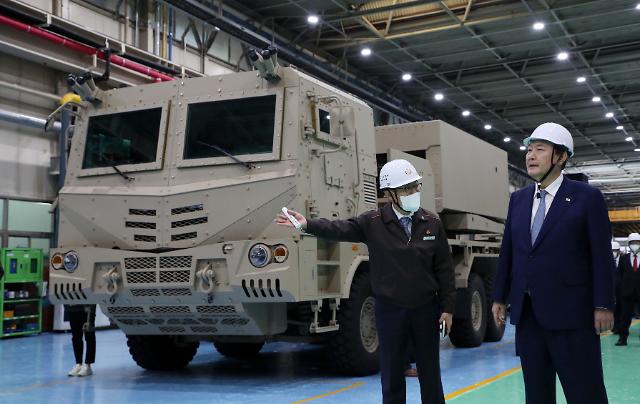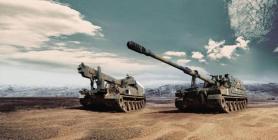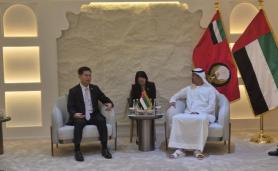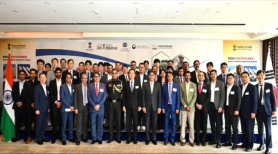
President Yoon Suk-yeol, right, visits a factory of Hanwha Aerospace, an arms manufacturer, in Changwon, South Gyeongsang Province, in this November 24, 2022, file photo. [Yonhap]
On February 14, the Ministry of Trade, Industry and Energy and the Ministry of National Defense announced the Third Basic Plan on Private-Public Technology Development Cooperation to beef up the country's defense industry as one of strategic export growth engines.
The ministries have selected 16 technology fields such as space, artificial intelligence (AI) and robotics that are eligible for investment for high-risks, high-return research and development (R&D). They agreed to step up private-military cooperation in developing defense technologies and promote their commercialization.
Under the basic plan, the government will expand investments to carry out ambitious R&D projects and improve the defense industry's competitiveness. It will also provide more support for companies to explore global markets.
The Yoon Suk-yeol administration plans to increase the proportion of private-military technology development investments over the entire state R&D investments from the present 0.84 percent to 1 percent. For the increase, the government will hold public hearings to build a consensus on the plan. It will also conduct a feasibility study on the 16 technological fields.
To raise the competitiveness of the private-military technology cooperation system, the government plans to locally produce 40 key materials and parts, and nurture more than 3,000 technicians. For this, the Yoon administration has promised to invest 50 billion won annually by 2027.
Besides, the government plans to work out cooperation strategy tailored to private companies and provide around 100 billion won in financial support for defense contractors to enter into global markets.
"South Korea's defense industry has become a strategic industry to lead the country's economic growth as well as beef up its military preparedness," said Defense Minister Lee Jong-sup. He added that the industry enjoyed a strong growth in exports of Korean-made weapons last year, boosted by the enhanced competitiveness of the country's weapons system.
"Our defense industry is emerging as one of the country's strategic export industries thanks to strong manufacturing capacity … and good quality of products," Trade-Industry Minister Lee Chang-yang said. He pledged to increase the industry's global market share to 5 percent and transform the country into one of the global top 4 defense powerhouses.
The country's arms exports hit the largest amount of $17.3 billion (21.3 trillion won) last year, roughly five times higher than the average defense exports for the past five years. The boom came as the country snatched large-scale export deals, including contracts with Poland to supply K2 battle tanks, K9 self-propelled howitzers, and FA-50 light attack aircraft.
South Korea became the world's eighth-largest weapons exporter in the 2017-21 period with its share in the global market standing at 2.8 percent, according to the Global Defense Market Yearbook 2022 released by the Korea Research Institute for Defense Technology Planning and Advancement.
Copyright ⓒ Aju Press All rights reserved.



